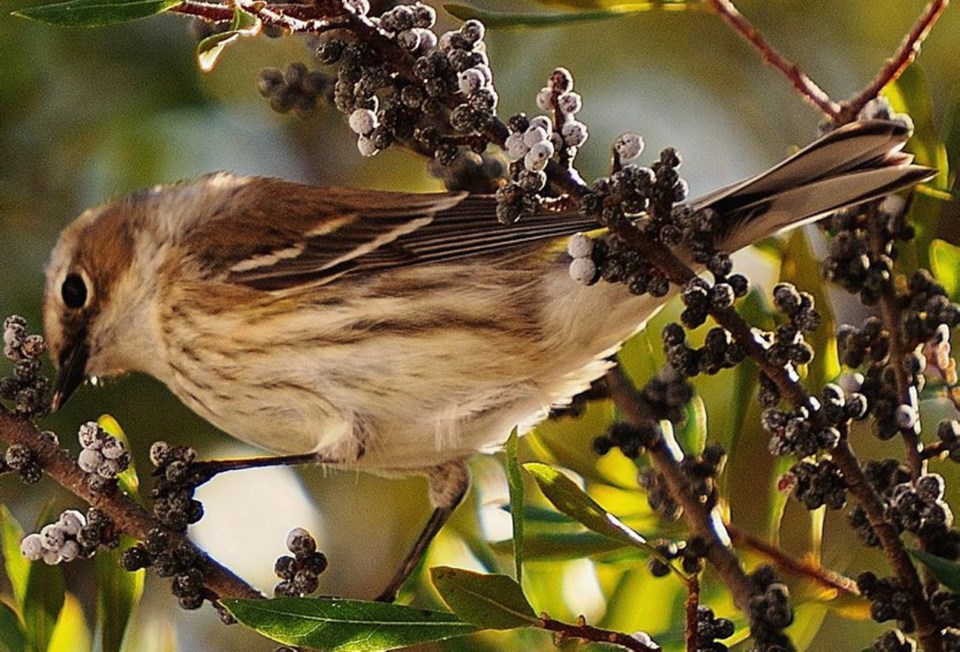Over the last few weeks, the large southern wax myrtle right outside my office has come alive with a feeding frenzy of birds. I’m paying close attention, because the feeding has been incredible.
There are several types of wax myrtle — the one that thrives on Vancouver Island is the Pacific wax myrtle.
The southern wax myrtle is known botanically as Morella cerifera. (The name has been changed from Myrica cerifera, if for no other reason than to keep you on your toes.) It is native from Texas up the eastern seaboard to New Jersey, and has a cold hardiness rating of zones 7-10.
As a native plant, it scores a perfect 10. As a landscape screen, give it another 10 as it is simply unbeatable. The small blue berries feed about 40 species of birds. The ones that are feasting as I write this column are the yellow-rumped warblers. At one time they were known as myrtle warblers and I can see why.
The southern wax myrtle is also the host plant for the red-banded hairstreak butterfly. This is one of the most beautiful butterflies in the garden, but few gardeners in my seminars have ever seen a hairstreak. I challenge you to watch your garden this year and identify some of the native hairstreak butterflies. Hairstreaks, such as the red-banded variety shown on this page, slowly move their hind wings up and down while feeding and even at rest. The tails give the appearance of a set of moving antennae with an eye. This draws any predator’s attention away from the real head, and allows the butterfly to escape.
In the landscape, you could not ask for a better small tree to act as a privacy screen around a porch, patio, deck or garden bath or to soften harsh walls. Coastal residents are always looking for plants tolerant of salt spray and wax myrtles are among the best.
It can grow 10 metres tall, but I most commonly see them in the five- to 7.5-metre range. The foliage is evergreen, and the white to grey multiple trunk structure is a landscape asset. The southern wax myrtle is almost always unisexual or dioecious — meaning there are male and female plants.
At the Columbus Botanical Garden, our 25-acre forest is full of these plants, creating a real haven of nature. Though I love the berries for the birds, the waxy fruit was once boiled and used to make bayberry candles.
In the south U.S., we mostly see the southern wax myrtle. The Pacific wax myrtle — Morella californica — grows to about four metres tall but is a little more shrub-like in appearance. Birds eat the berries, which mature to deep purple and are waxy but are not aromatic and are not used in candles.
The northern wax myrtle, Morella pensylvanica, feeds birds with its white berries, which persist all season, from Maine southward to Virginia.
Spring planting season is starting its slow creep northward. Check with your favourite garden centre to find which wax myrtle will grow best in your garden.
Norman Winter is executive director of the Columbus Botanical Garden, Columbus Georgia, and author of Captivating Combinations: Color and Style in the Garden.



